Imagine stepping into your kitchen and picking a fresh tomato or crisp lettuce leaf, grown by your own hands, even in the heart of winter. Whether you’re a seasoned gardener with a green thumb or a curious beginner eager to dip your hands into the soil, “Simple Ways to Grow Fresh Vegetables Indoors” offers a bountiful harvest of knowledge to help you cultivate your indoor garden with confidence and joy.
This guide is more than just a collection of gardening tips; it’s a doorway to a world where fresh produce is always within arm’s reach. By embracing these simple methods, you’ll not only enjoy the satisfaction of nurturing plants but also the practical benefits of having a constant supply of fresh, homegrown vegetables at your fingertips.
Prepare to transform your living space into a vibrant oasis of green that nourishes both body and spirit. With our easy-to-follow techniques, you’ll find that the journey of indoor gardening is as rewarding as the delicious results it yields.
Select Compact Vegetable Varieties
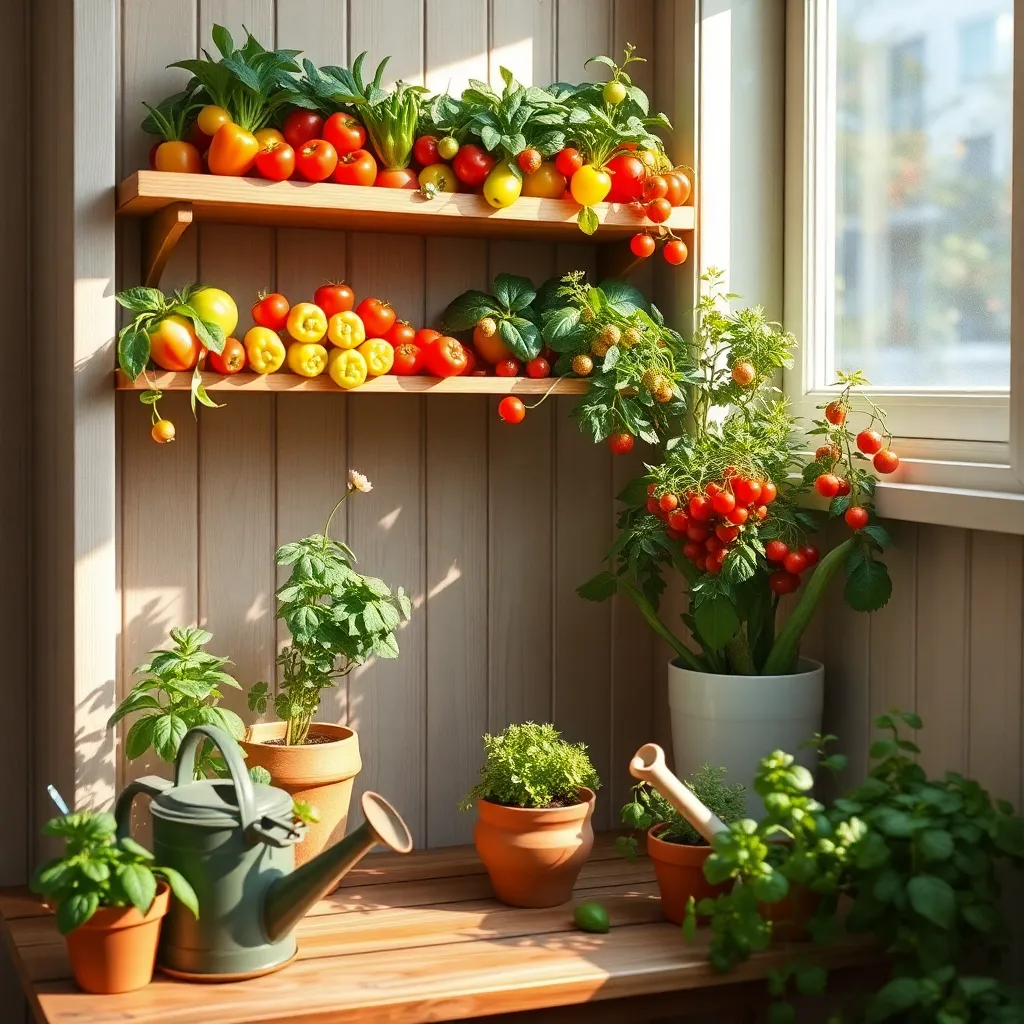
Choosing compact vegetable varieties is a smart strategy for indoor gardening. These plants are specifically bred to thrive in smaller spaces, making them perfect for apartment dwellers or those with limited indoor space.
When selecting plants, consider microgreens, dwarf tomatoes, and bush beans as excellent choices. These varieties not only fit into small spaces but also offer a quick harvest, allowing gardeners to enjoy fresh produce sooner.
Focus on containers that match the plant’s size; for example, a 5-gallon pot is ideal for dwarf tomato plants. Ensure your chosen container has drainage holes to prevent waterlogging, which can lead to root rot.
Maintain optimal growing conditions by using a quality potting mix and providing adequate light. For most compact vegetables, a south-facing window or supplemental grow lights will ensure they receive the necessary 6-8 hours of light daily.
Water your plants consistently, keeping the soil moist but not soggy. A simple way to check if your plants need watering is to stick your finger into the soil; if the top inch feels dry, it’s time to water.
Advanced gardeners can experiment with hydroponic systems for compact vegetables, which can enhance growth and yield. These systems can be set up indoors with a bit of initial investment and are particularly efficient with space and resources.
Utilize South-Facing Windows
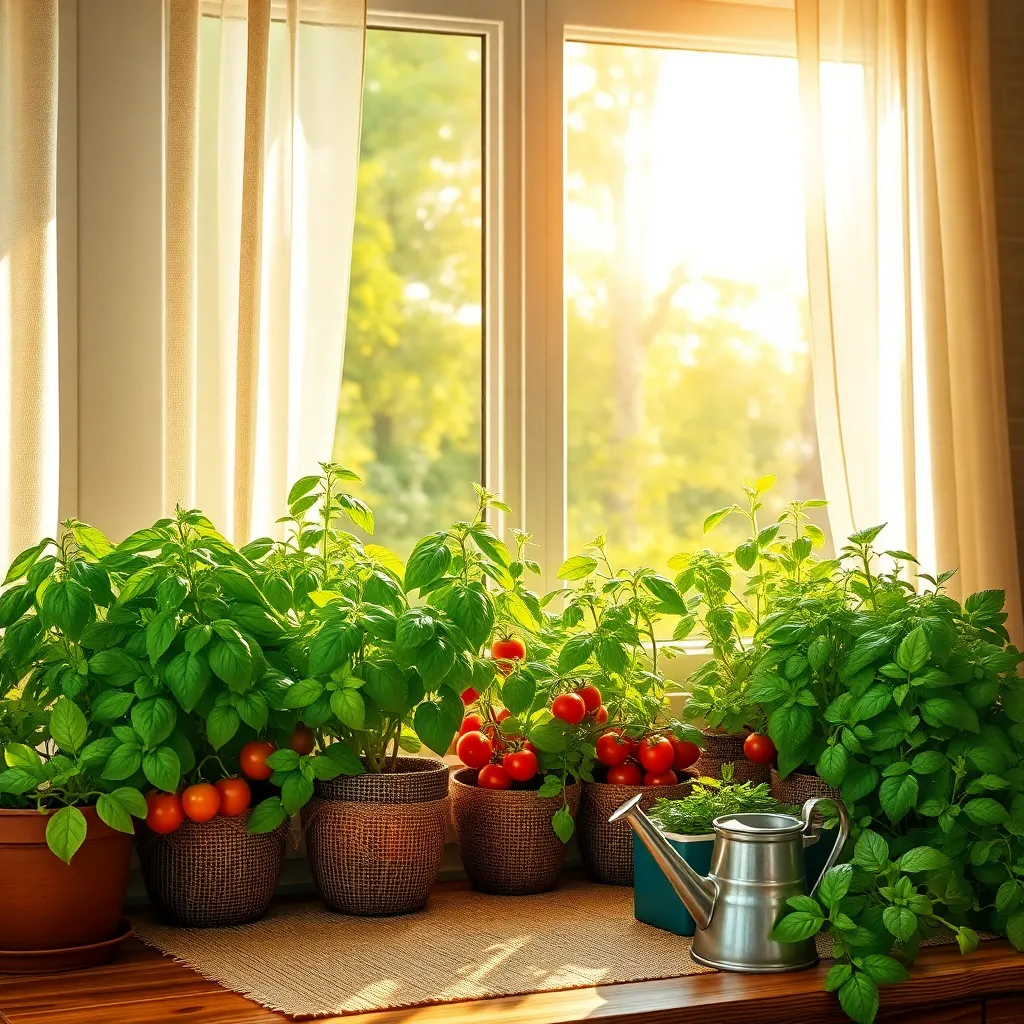
Maximizing the potential of your south-facing windows can significantly boost your indoor vegetable garden’s success. These windows provide abundant sunlight, which is crucial for the growth of many vegetables, especially during the shorter days of winter.
Place your vegetable pots and containers close to the window to ensure they receive at least six to eight hours of sunlight daily. Leafy greens like spinach and lettuce thrive in these conditions, as do herbs such as basil and parsley.
It’s important to rotate your plants every few days to ensure even light exposure, preventing them from growing lopsided. Additionally, consider using a reflective surface, like a whiteboard or aluminum foil, behind the plants to maximize light absorption.
For those looking to take their indoor gardening to the next level, investing in a grow light can supplement natural light on cloudy days or in the evenings. LED grow lights are energy-efficient and can be adjusted to match the specific light spectrum your vegetables need, promoting robust growth and higher yields.
Incorporate LED Grow Lights
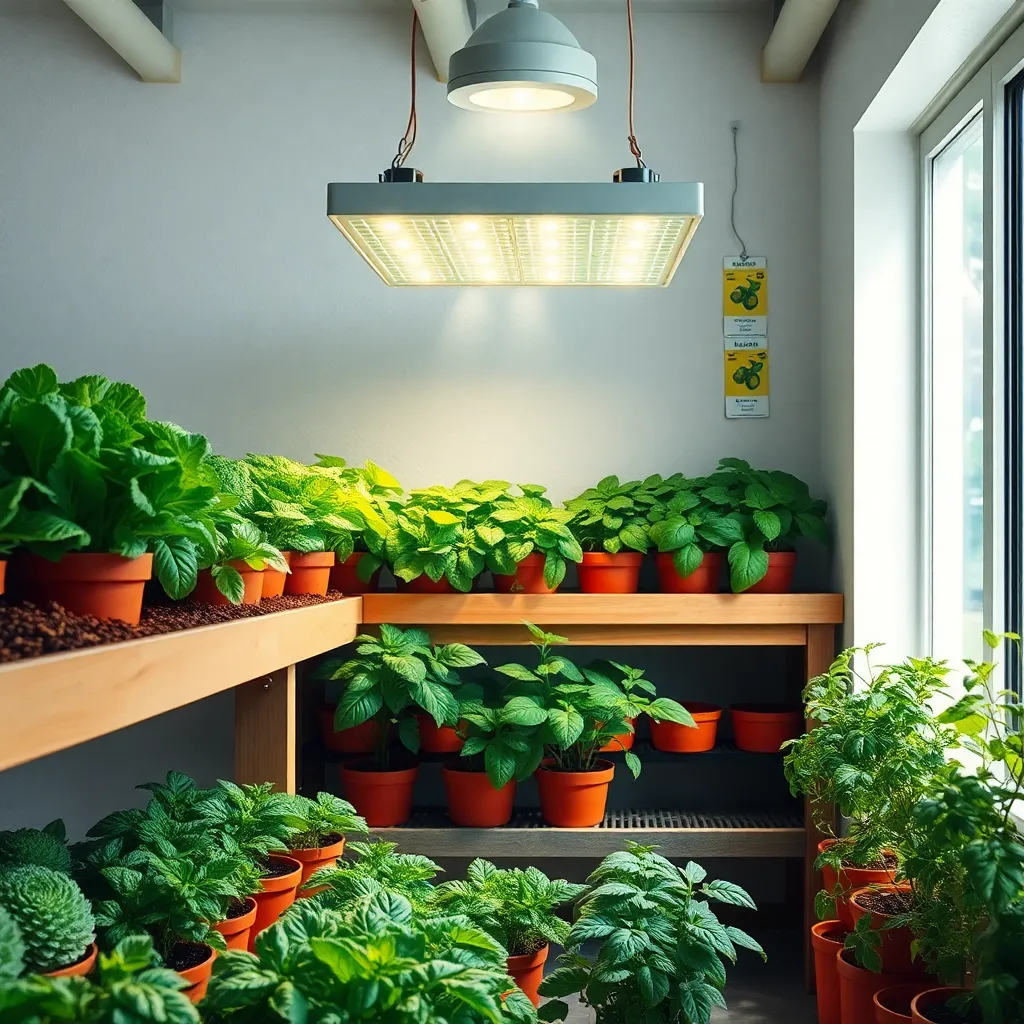
LED grow lights are an excellent way to supplement natural light when growing vegetables indoors. They provide the spectrum of light necessary for photosynthesis, ensuring your plants thrive even in less-than-ideal lighting conditions.
Setting up LED grow lights is straightforward and can be tailored to fit any indoor space. Position the lights about 12-18 inches above your plants to mimic the intensity of natural sunlight, adjusting the height as your plants grow.
It’s important to choose the right type of LED grow light for your vegetables. Full-spectrum LED lights are highly recommended as they cover all the wavelengths needed for both vegetative growth and flowering stages.
For optimal results, keep the lights on for 12-16 hours a day to simulate a full day of sunlight. Use a timer to automate this process, which will help maintain a consistent routine for your plants.
Consider the specific needs of different vegetables when using LED grow lights. Leafy greens such as lettuce and spinach can thrive with moderate light, while fruiting plants like tomatoes might require more intense lighting for the best yields.
With the right setup and care, LED grow lights can help you produce bountiful indoor vegetable harvests year-round. By experimenting with light duration and intensity, you can fine-tune your setup to meet the precise needs of your plants.
Use Self-Watering Containers
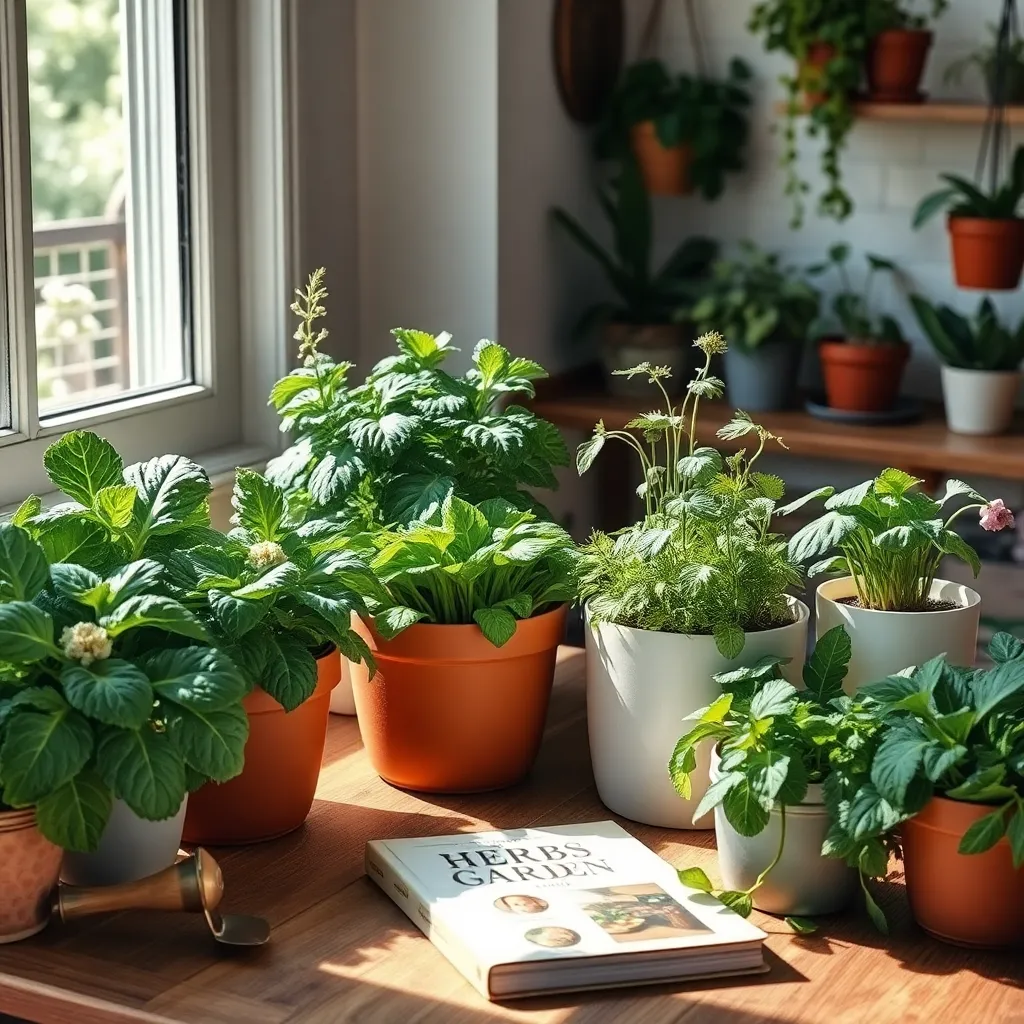
Self-watering containers are a fantastic solution for those who want to grow vegetables indoors without worrying about over or under-watering. These containers have a built-in reservoir at the bottom that allows the plants to absorb water as needed, ensuring consistent moisture levels.
To get started, choose a self-watering container that’s appropriate for the type of vegetable you plan to grow. For instance, smaller containers are ideal for herbs and leafy greens, while larger ones work well for tomatoes or peppers.
Fill the container with a high-quality potting mix, ideally one that retains moisture well but also provides good drainage. Adding a layer of mulch on top of the soil can help prevent evaporation and keep the soil evenly moist.
For beginners, it’s important to monitor the water reservoir level at least once a week, especially if you notice the leaves wilting or yellowing. More experienced gardeners might want to experiment by adding a diluted liquid fertilizer to the reservoir every few weeks to promote healthy growth.
These containers are perfect for those with busy lifestyles, as they reduce the frequency of watering while maintaining optimal plant health. By using self-watering containers, you’ll find it easier to achieve a lush indoor vegetable garden with minimal effort.
Rotate Plants for Even Growth
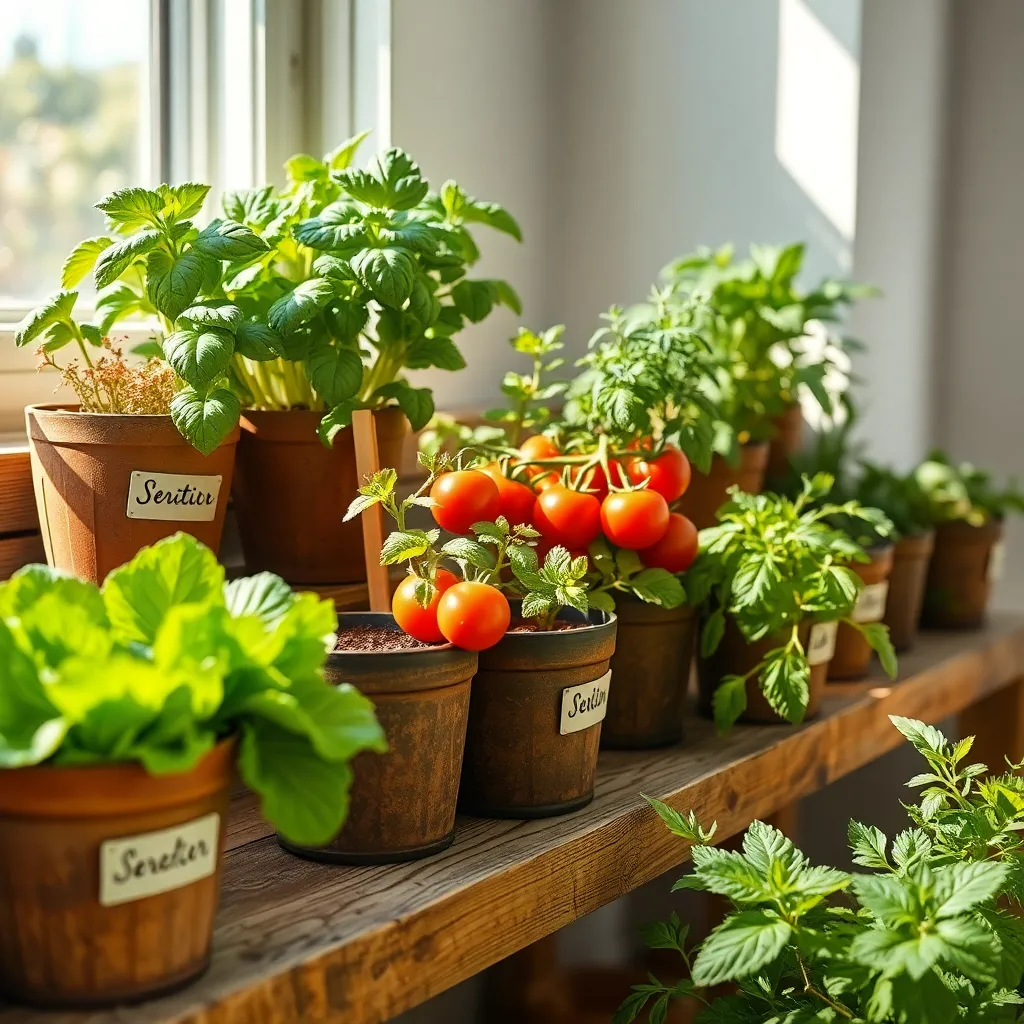
To promote even growth in your indoor vegetable garden, regularly rotate your plants. This simple practice ensures all sides of the plant receive equal exposure to light, preventing lopsided growth.
Begin by turning each plant 90 degrees every few days. This method allows each side of the plant to bask in the available light, encouraging balanced development.
For plants like tomatoes or peppers, which are light-intensive, rotation is especially crucial. These plants thrive when all their foliage can photosynthesize efficiently, contributing to robust growth and fruit production.
Advanced gardeners can consider using a lazy Susan for easy plant rotation. This tool simplifies the process, making it effortless to maintain consistent light exposure for your plants without the hassle of manual handling.
Conclusion: Growing Success with These Plants
As we’ve explored, nurturing a thriving indoor vegetable garden is not unlike cultivating a flourishing relationship. First, understanding the specific needs of your plants parallels recognizing the unique desires of your partner. Second, the importance of consistent care reminds us to invest time and attention regularly. Third, creating a supportive environment mirrors fostering a safe and loving space for growth. Fourth, patience in awaiting results teaches us the value of perseverance through challenges. Lastly, celebrating small victories keeps the journey joyful and rewarding.
To put these insights into action, start today by assessing one aspect of your indoor garden or relationship that could use a little more care and attention. Whether it’s adding a touch more sunlight or planning a surprise date night, small steps lead to big transformations.
Bookmark this article now so you can revisit these nurturing principles whenever you need a gentle reminder. By embedding these practices into your daily life, you’ll cultivate not just fresh vegetables but also a vibrant and resilient relationship. Remember, the seeds you plant today can blossom into a future filled with love and connection. Here’s to a garden—and a relationship—abundant in growth and joy.
